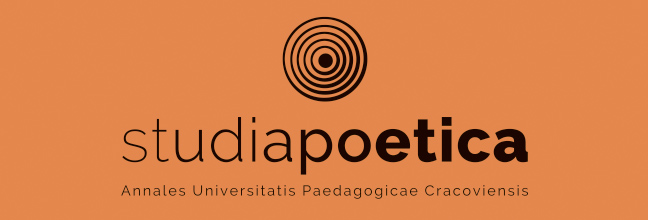Wizerunek bitwy pod Grunwaldem w podręcznikach szkolnych Litwy z lat 1906–2010
Main Article Content
Abstrakt
Grunwald has occupied an important place in every Lithuanian history textbook, in most of them the event is devoted a separate chapter. The author of the article states that the older
textbooks provided no information on the significance of the battle of Grunwald for Poland. In the interwar period the battle was only a component of Vytautas’ portrayal, a symbol of
the ruler’s military victories. Grunwald was also used to show historic differences between Poland and Lithuania. We do not come across an interpretation where the Grunwald victory
would not be considered the greatest triumph of the Lithuanian army achieved by the Prince of Lithuania Vytautas the Great - a military genius. In the Soviet period, attempts were made to use the Grunwald victory in politics, as an instrument for the creation of an everlasting friendship between Lithuania and Russia as well as for strengthening the enmity towards the Western countries, especially West Germany. Contemporary textbooks show some remains of the former stereotypes concerning the behaviour of the Polish chivalry on the battlefield. The author looks for the reason for such a state of affairs in inadequate competence of the authors, lack of critical attitude towards the material presented in the former textbooks and their negligent revision. He also shows that the advantage of the contemporary textbooks is that they are based on systematized achievements of historiography. On the cusp of the 20th and 21st centuries, the textbooks started to display the features of the scientific objectivism. Thanks to that, the students can fully realize how meaningful the battle of Grunwald was for Lithuania. The importance consisted in the increase of the authority of Vytautas the Great, reclaiming Samogitia and undermining the military power of the Teutonic Order. As a permanent aftermath of the battle the author also mentions the prevention of a perennial
union of the Prussian and Livonian branches of the Teutonic Order and the creation of firm premises for an immediate baptism of Samogitia. The students also find out that the
battle of Grunwald became an effective prevention of the Teutonic Order’s further conquest of Lithuania, destruction of the Lithuanian nation, ruining its culture and wealth. It is also
emphasized that Lithuania and Poland became the greatest political power in Eastern Europe. A predominant problem connected with the battle of Grunwald appearing in the textbooks is the person of the Prince Vytautas the Great. The question of the diversionary flight manoeuvre became an undisputable didactic truth. The problem arousing the greatest controversy is the role of King Wladyslaw Jagiello and the Polish army. The author of the article also explores the issue of how the Lithuanian textbooks serve the development of the discourse about the historical memory.
textbooks provided no information on the significance of the battle of Grunwald for Poland. In the interwar period the battle was only a component of Vytautas’ portrayal, a symbol of
the ruler’s military victories. Grunwald was also used to show historic differences between Poland and Lithuania. We do not come across an interpretation where the Grunwald victory
would not be considered the greatest triumph of the Lithuanian army achieved by the Prince of Lithuania Vytautas the Great - a military genius. In the Soviet period, attempts were made to use the Grunwald victory in politics, as an instrument for the creation of an everlasting friendship between Lithuania and Russia as well as for strengthening the enmity towards the Western countries, especially West Germany. Contemporary textbooks show some remains of the former stereotypes concerning the behaviour of the Polish chivalry on the battlefield. The author looks for the reason for such a state of affairs in inadequate competence of the authors, lack of critical attitude towards the material presented in the former textbooks and their negligent revision. He also shows that the advantage of the contemporary textbooks is that they are based on systematized achievements of historiography. On the cusp of the 20th and 21st centuries, the textbooks started to display the features of the scientific objectivism. Thanks to that, the students can fully realize how meaningful the battle of Grunwald was for Lithuania. The importance consisted in the increase of the authority of Vytautas the Great, reclaiming Samogitia and undermining the military power of the Teutonic Order. As a permanent aftermath of the battle the author also mentions the prevention of a perennial
union of the Prussian and Livonian branches of the Teutonic Order and the creation of firm premises for an immediate baptism of Samogitia. The students also find out that the
battle of Grunwald became an effective prevention of the Teutonic Order’s further conquest of Lithuania, destruction of the Lithuanian nation, ruining its culture and wealth. It is also
emphasized that Lithuania and Poland became the greatest political power in Eastern Europe. A predominant problem connected with the battle of Grunwald appearing in the textbooks is the person of the Prince Vytautas the Great. The question of the diversionary flight manoeuvre became an undisputable didactic truth. The problem arousing the greatest controversy is the role of King Wladyslaw Jagiello and the Polish army. The author of the article also explores the issue of how the Lithuanian textbooks serve the development of the discourse about the historical memory.
Article Details
Jak cytować
Karvelis, D. (2015). Wizerunek bitwy pod Grunwaldem w podręcznikach szkolnych Litwy z lat 1906–2010. Res Gestae, 11, 135–146. Pobrano z https://resgestae.uken.krakow.pl/article/view/1865
Dział
Artykuły
|
